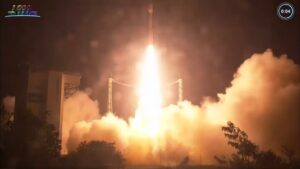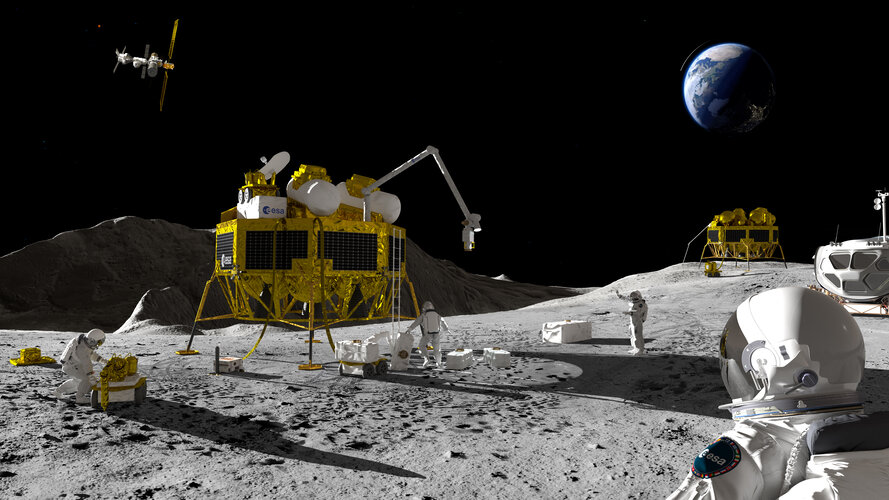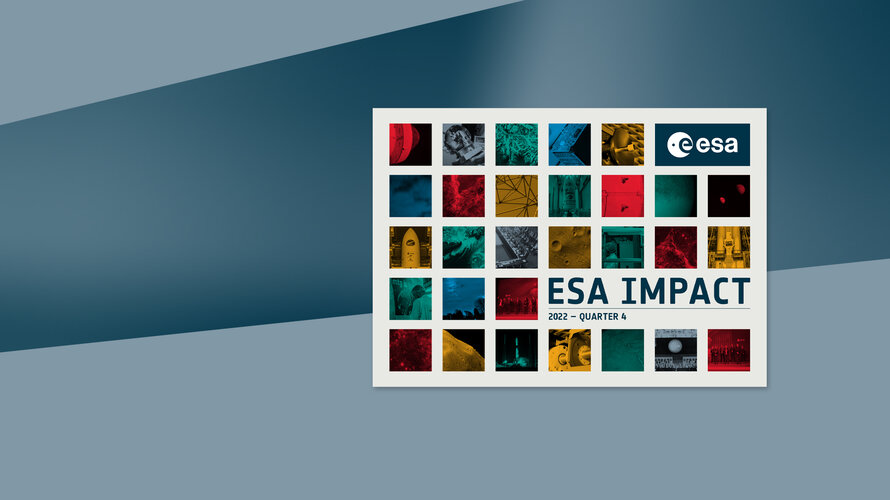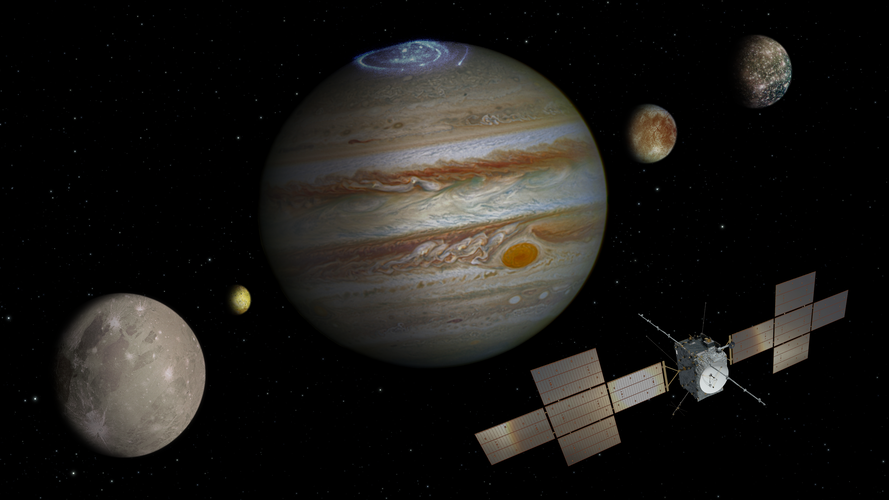NASA's InSight Mars lander may have sent its last image to Earth
Wednesday, 21 December 2022 03:11 The InSight Mars lander has sent what could be its final image to Earth as NASA expects the probe to stop transmitting.
"My power's really low, so this may be the last image I can send. Don't worry about me though: my time here has been both productive and serene. If I can keep talking to my mission team, I will - but I'll be signing off here soon. Thanks for staying with me," the InSi
The InSight Mars lander has sent what could be its final image to Earth as NASA expects the probe to stop transmitting.
"My power's really low, so this may be the last image I can send. Don't worry about me though: my time here has been both productive and serene. If I can keep talking to my mission team, I will - but I'll be signing off here soon. Thanks for staying with me," the InSi Vega C fails on second launch
Wednesday, 21 December 2022 02:44
The second flight of Arianespace’s Vega C failed to reach orbit Dec. 20 after its second stage malfunctioned, destroying two Pléiades Neo imaging satellites.
The post Vega C fails on second launch appeared first on SpaceNews.
NeuralAgent and Miratlas jointly address atmospheric impediments to optical communications
Tuesday, 20 December 2022 23:58
German startup NeuralAgent GmbH is joining forces with French startup Miratlas SAS to address a vexing problem for satellite optical communications: transmitting data through Earth’s atmosphere.
The post NeuralAgent and Miratlas jointly address atmospheric impediments to optical communications appeared first on SpaceNews.
Connecting the Dots | Future space drugs
Tuesday, 20 December 2022 21:26
Pioneering space research is opening a new avenue for combating some of Earth’s most complex and devastating diseases.
The post Connecting the Dots | Future space drugs appeared first on SpaceNews.
Future of space engineering is model-based
Tuesday, 20 December 2022 11:57
A hackathon challenged aerospace students to develop a detailed digital system model for a robotic assistant for astronauts on the Moon, able to identify key areas of interest in advance of any humans landing, guide them to their habitat and even rescue any moonwalkers in distress.
The winning team, from France’s Institut Supérieur de l'Aéronautique et de l'Espace, completed their task within just two weeks, using Model Based System Engineering to do so. This method involves creating digital models of space missions to manage their design, construction, test and operation – and has been highlighted by ESA Director General Josef
Fiscal year 2023 omnibus bill provides $25.4 billion for NASA
Tuesday, 20 December 2022 11:53
A fiscal year 2023 omnibus spending bill will provide NASA with nearly $25.4 billion, an increase of more than 5% from 2022 but less than what the agency requested.
The post Fiscal year 2023 omnibus bill provides $25.4 billion for NASA appeared first on SpaceNews.
Enjoy ESA’s Impact over the last quarter!
Tuesday, 20 December 2022 10:35
Enjoy ESA’s Impact over the last quarter!
Welcome to this edition of ESA Impact, an interactive publication covering stories and images from the fourth quarter of 2022.
L3Harris To Acquire Aerojet Rocketdyne
Tuesday, 20 December 2022 10:05 L3Harris Technologies (NYSE: LHX) and Aerojet Rocketdyne Holdings, Inc. (NYSE: AJRD) together announced the signing of a definitive agreement for L3Harris to acquire Aerojet Rocketdyne for $58 per share, in an all-cash transaction valued at $4.7 billion, inclusive of net debt.
This marks L3Harris' second acquisition announcement of 2022, demonstrating its continued focus on delivering crit
L3Harris Technologies (NYSE: LHX) and Aerojet Rocketdyne Holdings, Inc. (NYSE: AJRD) together announced the signing of a definitive agreement for L3Harris to acquire Aerojet Rocketdyne for $58 per share, in an all-cash transaction valued at $4.7 billion, inclusive of net debt.
This marks L3Harris' second acquisition announcement of 2022, demonstrating its continued focus on delivering crit Opportunities for media: ESA’s Jupiter Icy Moons Explorer
Tuesday, 20 December 2022 08:00
US space entities examine future space technology
Tuesday, 20 December 2022 07:51 Seventy professionals from the space ecosystem gathered for the Space Futures Workshop, Nov. 29-30, to examine future technologies and forge a path towards ensuring the U.S. maintains its advantage in the increasingly congested and contested space domain.
Convened by NewSpace New Mexico, the event held at the University of Colorado Boulder, marked the fifth time that U.S. Space Force leade
Seventy professionals from the space ecosystem gathered for the Space Futures Workshop, Nov. 29-30, to examine future technologies and forge a path towards ensuring the U.S. maintains its advantage in the increasingly congested and contested space domain.
Convened by NewSpace New Mexico, the event held at the University of Colorado Boulder, marked the fifth time that U.S. Space Force leade First deep space biology experiment begins, follow along in real-time
Tuesday, 20 December 2022 07:51 NASA's BioSentinel has carried living organisms farther from Earth than ever before - more than one million miles. Aboard the shoebox-sized CubeSat are microorganisms, in the form of yeast - the very same yeast that makes bread rise and beer brew.
On Dec. 5, BioSentinel was 655,730 miles from Earth when the BioSentinel team at NASA's Ames Research Center in California's Silicon Valley sent
NASA's BioSentinel has carried living organisms farther from Earth than ever before - more than one million miles. Aboard the shoebox-sized CubeSat are microorganisms, in the form of yeast - the very same yeast that makes bread rise and beer brew.
On Dec. 5, BioSentinel was 655,730 miles from Earth when the BioSentinel team at NASA's Ames Research Center in California's Silicon Valley sent Building a powerhouse in deep space
Tuesday, 20 December 2022 07:51 Gateway will be humanity's first space station in lunar orbit and serve as an essential element of NASA's Artemis missions. As astronauts live and work on Gateway to enable sustained exploration and research in deep space, their efforts will be made possible by the Power and Propulsion Element (PPE). A foundational component of the lunar outpost and the most powerful solar electric spacecraft ev
Gateway will be humanity's first space station in lunar orbit and serve as an essential element of NASA's Artemis missions. As astronauts live and work on Gateway to enable sustained exploration and research in deep space, their efforts will be made possible by the Power and Propulsion Element (PPE). A foundational component of the lunar outpost and the most powerful solar electric spacecraft ev STARCOM publishes Foundational Doctrine on Sustainment
Tuesday, 20 December 2022 07:51 Space Training and Readiness Command recently released its latest keystone-level Space Doctrine Publication - Space Doctrine Publication (SDP) 4-0, Sustainment - which articulates extant best practices and lessons learned for sustainment of space forces.
SDP 4-0 presents the United States Space Force's current body of knowledge pertaining to the sustainment of space forces and capabilities
Space Training and Readiness Command recently released its latest keystone-level Space Doctrine Publication - Space Doctrine Publication (SDP) 4-0, Sustainment - which articulates extant best practices and lessons learned for sustainment of space forces.
SDP 4-0 presents the United States Space Force's current body of knowledge pertaining to the sustainment of space forces and capabilities DOD Official: Norms Must be Established in Space
Tuesday, 20 December 2022 07:51 Last week, the United Nations approved a resolution calling on nations not to conduct destructive, direct-ascent antisatellite missile tests. The United States agreed to the resolution, while China and Russia were among just nine countries that voted against it.
Refraining from conducting those kinds of tests in space, in part, prevents the creation of new and dangerous space debris.
Last week, the United Nations approved a resolution calling on nations not to conduct destructive, direct-ascent antisatellite missile tests. The United States agreed to the resolution, while China and Russia were among just nine countries that voted against it.
Refraining from conducting those kinds of tests in space, in part, prevents the creation of new and dangerous space debris. DOD provides update on Mission to Identify 'Anomalous Phenomena'
Tuesday, 20 December 2022 07:51 In July, the DOD set up the All-domain Anomaly Resolution Office to, among other things, identify 'unidentified anomalous phenomena' which might pose a threat to national security and the operations of both the military and other federal agencies.
"Unidentified anomalous phenomena," is anything in space, in the air, on land, in the sea or under the sea that can't be identified, and which m
In July, the DOD set up the All-domain Anomaly Resolution Office to, among other things, identify 'unidentified anomalous phenomena' which might pose a threat to national security and the operations of both the military and other federal agencies.
"Unidentified anomalous phenomena," is anything in space, in the air, on land, in the sea or under the sea that can't be identified, and which m 
